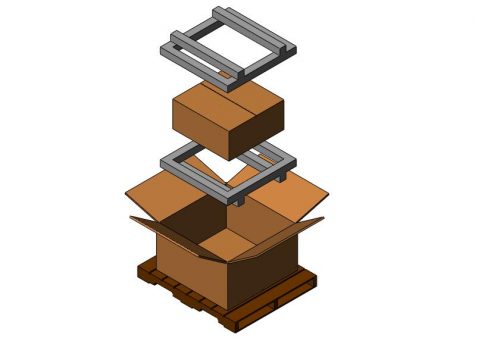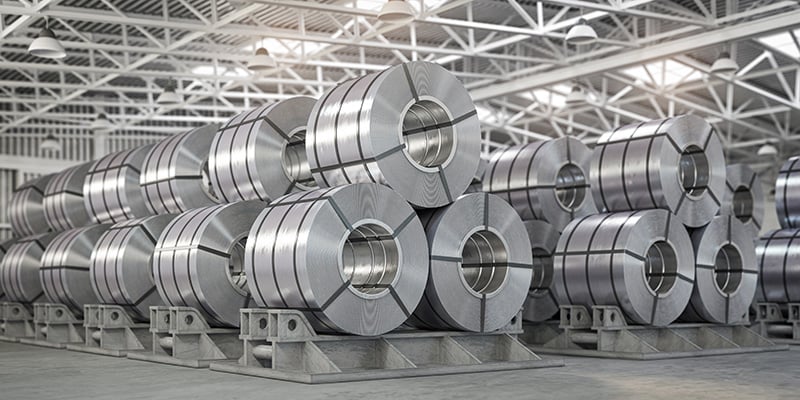Industrial Metal Packaging: Toughness and Durability in Every Design
Wiki Article
Reliable Industrial Recycling Solutions for Sustainable Packaging: A Comprehensive Overview
In today's significantly environmentally-conscious world, the demand for sustainable packaging solutions has never ever been greater. To fulfill this need, organizations across markets are proactively looking for efficient industrial recycling options. However, navigating the facility landscape of lasting product packaging can be testing without a comprehensive guide. That's where this thorough overview on efficient industrial recycling remedies for sustainable product packaging comes in. By discovering vital locations such as packaging product selection, making for recyclability, implementing recycling framework, working together with recycling partners, and monitoring and gauging recycling success, this guide will certainly outfit you with the knowledge and devices needed to make educated decisions and drive positive change within your organization. Whether you're a product packaging specialist, sustainability manager, or just curious about the topic, this overview will supply important understandings and methods to assist you browse the world of sustainable packaging.Packaging Material Option
The option of packaging products plays an important duty in ensuring the sustainability of commercial recycling options. The option of products is key in decreasing environmental impact and making the most of recycling efficiency when it comes to sustainable product packaging. Picking the ideal materials can help minimize waste generation, save sources, and advertise a circular economy.One essential aspect to think about in packaging material selection is recyclability - processing company. Materials that can be easily recycled and incorporated back right into the production cycle are preferred. Materials like cardboard, paper, glass, and certain kinds of plastics can be recycled numerous times without losing their top quality. On the various other hand, products that are challenging to reuse, such as non-recyclable compounds or mixed plastics, can develop difficulties for the reusing process and might end up in burners or landfills.
Another factor to consider is making use of sustainable and naturally degradable materials. Product packaging made from renewable energies, such as plant-based plastics or biopolymers, can aid decrease reliance on fossil gas and reduce environment modification. Furthermore, eco-friendly materials break down normally over time, reducing the accumulation of waste in garbage dumps.
In addition, the weight and volume of packaging products should be reduced to minimize transport prices and power usage. Light-weight products not just call for less resources during manufacturing but also contribute to lower carbon discharges throughout transport.
Designing for Recyclability
Packaging designers ought to prioritize the usage of products that are commonly accepted for recycling and have actually developed reusing facilities. Materials such as glass, aluminum, and specific kinds of plastic, like Family pet and HDPE, are frequently recycled and need to be preferred over products that are challenging or costly to recycle.Another essential factor to consider in creating for recyclability is the elimination of unneeded elements or materials. By decreasing the variety of layers, coverings, and added elements, packaging can be made less complex and much easier to recycle. In addition, designers must aim to reduce using blended products, as they can complicate the reusing process.

Implementing Recycling Facilities
Effective implementation of recycling framework is vital for the success of industrial recycling remedies. Without appropriate framework in position, the reusing procedure becomes ineffective and inefficient, preventing the overall goal of sustainable product packaging.To implement recycling facilities properly, several essential variables need to be thought about. To start with, there should be a well-organized collection system that helps with processing company the separation and collection of recyclable materials. This can include marked recycling bins in public rooms, as well as collaborations with waste monitoring firms for curbside pick-up and sorting.
As soon as collected, the recyclable materials require to be moved to recycling centers in a prompt fashion. This needs reliable logistics and transport networks, ensuring that the materials get to the proper facilities without hold-up.
At the reusing facilities, progressed sorting and handling technologies ought to be in location to separate different kinds of products properly. This consists of the usage of automated arranging makers, optical scanners, and hand-operated sorting strategies.
In addition, there need to be a durable market demand for recycled materials. This can be achieved through partnerships with producers and industries that use recycled materials in their production processes. Creating a secure market for recycled products incentivizes the recycling industry and advertises the round economy.
Collaborating With Recycling Allies

One secret aspect of teaming up with reusing partners is the facility of clear communication networks. It is crucial to establish open lines of communication to promote the exchange of info, updates, and feedback. This enables both parties to remain educated about the progression of recycling campaigns and deal with any kind of obstacles or problems that might occur.
In addition, partnership can entail joint initiatives in applying and developing reusing programs. Recycling partners can give useful understandings and assistance in creating efficient collection systems and establishing the most ideal recycling technologies. By interacting, companies and recycling partners can maximize the reusing procedure and decrease waste.
Moreover, partnership can prolong past the functional aspects of reusing. It can additionally encompass advocacy and education efforts. By signing up with forces, companies and recycling companions can increase understanding concerning the importance of recycling and promote the adoption of lasting packaging methods among consumers and various other stakeholders.
Monitoring and Measuring Recycling Success
To make certain the efficiency of industrial recycling options and the success of lasting product packaging objectives, it is important for services and their recycling companions to develop a thorough system for monitoring and gauging reusing success (bulk container recycling). Determining and tracking reusing success enables organizations to assess the impact of their reusing initiatives, recognize locations for renovation, and established purposeful targets for future progressionOne means to track reusing success is with using information collection and analysis devices. By accumulating information on the quantity of packaging waste generated, the portion of waste that is recycled, and the types of materials being reused, services can get useful understandings right into their recycling performance. This information can then be examined to identify patterns, patterns, and areas of inefficiency.
Another important aspect of monitoring and gauging recycling success is establishing standardized and clear metrics. This allows services to compare their performance against industry benchmarks and track their progression over time. Metrics such as reusing rates, waste diversion prices, and greenhouse gas discharges can offer a quantitative step of a business's reusing success.

Verdict
In final thought, executing reliable commercial recycling services for lasting packaging requires cautious consideration of product packaging product choice, making for recyclability, carrying out reusing facilities, collaborating with recycling partners, and monitoring and measuring reusing success. By incorporating these methods, services can contribute to a much more lasting and environmentally-friendly strategy to packaging, lowering waste and advertising the circular economic climate.By discovering vital locations such as packaging material choice, designing for recyclability, carrying out recycling framework, working together with recycling partners, and monitoring and gauging recycling success, this guide will certainly equip you with the knowledge and tools needed to make enlightened decisions and drive positive modification within your organization. Product packaging developers need to prioritize the use of materials that are commonly approved for recycling and have established recycling facilities.Cooperation with reusing partners is essential for the successful application of industrial reusing remedies and the achievement of sustainable packaging goals. By joining forces, companies and recycling companions can raise awareness about the significance of recycling and promote the adoption of lasting packaging practices among consumers and other stakeholders.
By collecting information on the amount of packaging waste generated, the percentage of waste that is recycled, and the types of products being reused, organizations can acquire important insights right into their reusing efficiency.
Report this wiki page